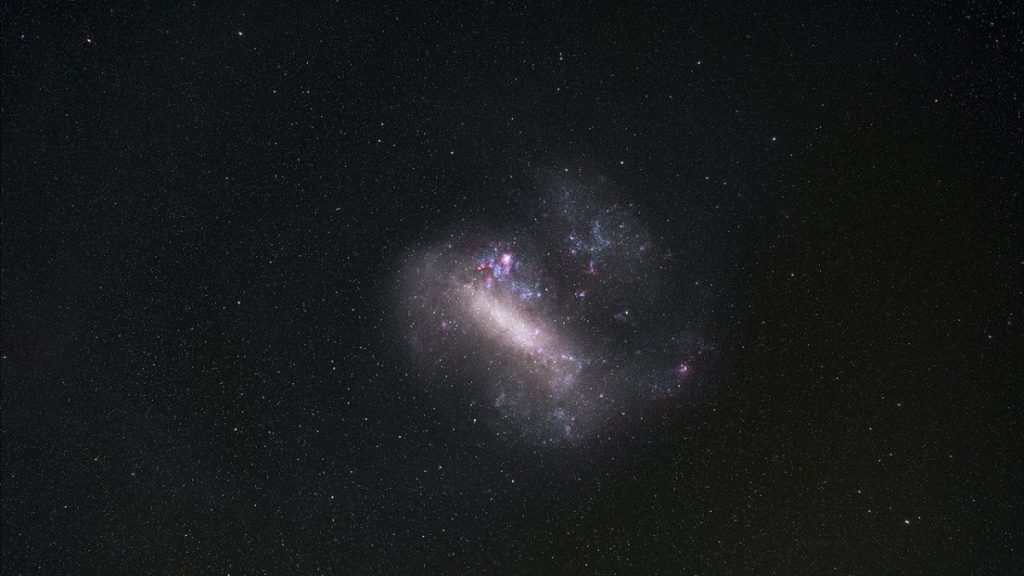A globular cluster in the Large Magellanic Cloud, a neighboring galaxy to the Milky Way, stands out among other representatives of its type. The experts are left baffled.
The globular cluster NGC 2005 appears to be an alien intruder in the Large Magellanic Cloud, a small neighboring galaxy to the Milky Way: the chemical composition of its stars differs greatly from that of other star clusters in the dwarf galaxy, observations show. Accordingly, it must be the remnants of a smaller galaxy that once merged with the Large Magellanic Cloud, An international research team writes for the journal natural astronomy. You see this as an affirmation of the “hierarchical scenario” of cosmology.
“Next, the large galaxies we observe today achieved their enormous mass by merging with many smaller galaxies,” explain Alessio Mucciarelli and colleagues from the University of Bologna in Italy. “But this process should also occur in galaxies of smaller satellites such as the Magellanic Clouds.” This can be seen in computer simulations of cosmic evolution – but so far there are no observations that prove such mergers in dwarf galaxies.
Mucciarelli and colleagues examined 11 globular clusters in the Large Magellanic Cloud and 15 globular clusters in the Milky Way using their own observations and archival data from the European Southern Observatory’s Very Large Telescope ESO in Chile. Globular clusters are extremely dense clusters of several thousand stars. “Because of their density, they can survive mergers for billions of years” – while a smaller galaxy that broke through a larger galaxy has already decayed without a trace during this time period, the researchers say.
As expected, the chemical composition of stars in globular clusters of the Milky Way and the Large Magellanic Cloud differs greatly from each other, since both galaxies have different evolutionary histories. Mucciarelli sees this as confirmation that globular clusters are well suited to studying the evolution of galaxies. But there is an anomaly among the globular clusters of the Large Magellanic Cloud: NGC 2005 does not match the other clusters of the dwarf galaxy.
“The obvious chemical differences between NGC 2005 and other globular clusters show that there must have been two very different evolutionary pathways here,” Mucciarelli and colleagues said. NGC 2005 could not have formed in the same environment as other star clusters. Instead, the lower proportion of heavy elements shows that NGC 2005 originated from a much smaller galaxy in which star formation occurred more slowly than the Large Magellanic Cloud.
So NGC 2005 is the only surviving witness to the merging of a small galaxy with the Large Magellanic Cloud. There is no longer any trace of the small galaxy itself. Accordingly, not only large galaxies, but also dwarf galaxies grow by merging.

“Total coffee aficionado. Travel buff. Music ninja. Bacon nerd. Beeraholic.”







More Stories
The European Space Agency announces “signs of spiders on Mars”
Raising diamonds made easy – Spectrum Science
Everything related to prevention and treatment